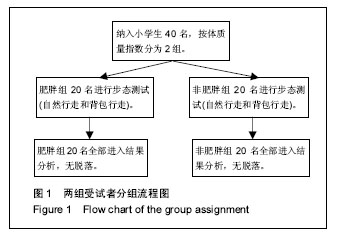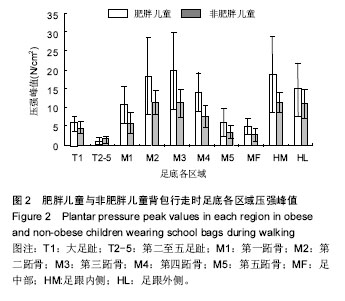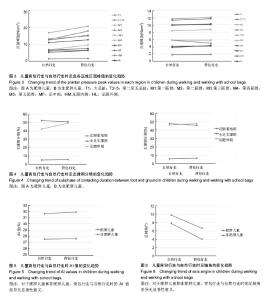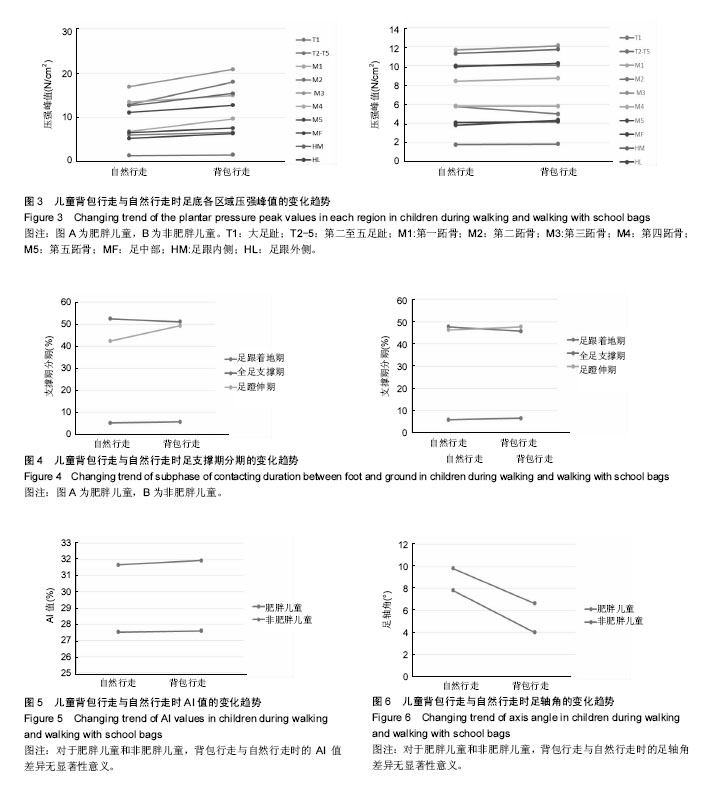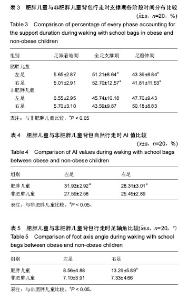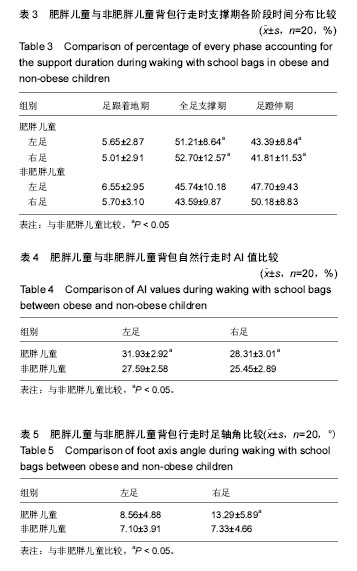| [1] 赵红霞.2006-2010年3-5岁儿童单纯性肥胖状况分析[J].中国社区医师:医学专业,2011,6:238.[2] El Hage R, Moussa E, Jacob C. Bone Mineral Content and Density in Obese, Overweight,and Normal-Weighted Sedentary Adolescent Girls. J Adolesc Health.2010;(47): 591-595.[3] Ma J, Feng N, Zhang SW, et al. Comparison of Changes in Body Composition during Puberty Development of Obese and Normal-weight Children in China. Biomed Environ Sci.2009; (22):413-418.[4] Hills AP, Par ker AW. Gait characteristics of obese children. Arch Phys Med Rehab. 1991;(72): 403-407.[5] McGraw B, McClenaghan BA, Williams HG, et al. Gait and Postural Stability in Obese and Nonobese Prepubertal Boys. Arch Phys Med Rehabil. 2000;81:454-460.[6] Mickle KJ, Steele JR, Munro BJ. The Feet of Overweight and Obese Young Children: Are They Flat or Fat? Obesity. 2006; 11(14):1949-1953.[7] 王琳,徐冬青,李静先.中国青春期前男性肥胖儿童步态和姿势控制变化[J].中国运动医学杂志,2008,27(2):179-183.[8] 张晓栋,肖丹丹.肥胖儿童与非肥胖儿童行走步态特征的运动学分析[J].北京体育大学学报,2008,31(12):1651-1654.[9] Messier SP, Legault C, Loeser RF, et al. Does high weight loss in older adults with knee osteoarthritis affect bone-on-bone joint loads and muscle forces during walking? Osteoarthritis Cartilage. 2011;(19):272-280.[10] Dowling AM, Steele JR, Baur LA. What are the effects of obesity in children on plantar pressure distributions? Int J Obes Relat Metab Disord. 2004;28(11):1514-1519.[11] 栾天峰,孙琳芳. 11-12岁肥胖儿童自然行走时的足底压力分布特征研究[J].社会科学学科研究科教导刊,2010,(3):154-155.[12] Yan SH,Zhang K,Tan GQ,et al. Effects of obesity on dynamic plantar pressure distribution in Chinese prepubescent children during walking. Gait Posture. 2013;(37): 37-42.[13] Pascoe DD, Pascoe DE, Wang YT, et al. Inf luence of carrying book bags on gait cycle and posture of youths. Ergonomics. 1997; 40(6)∶631.[14] 朱虹,马军, 刘恩庆,等.北京市部分中小学生背负书包情况调查[J].中国学校卫生, 2001,22(1)∶26.[15] Hong YL, Li JX, Wong AS, et al. Weight of school bags and the metabolic strain created in children. J Human Mov Studies.1998;35:187.[16] Smith B, Roan M, Lee M. The effect of evenly distributed load carrying on lower body gait dynamics for normal weight and overweight subjects. Gait Posture. 2010;(32):176-180.[17] 孟昭莉,元文学. 学龄儿童背负不同重量行走时足底压力分布研究[J].生物医学工程杂志.2008,25(4):852-856.[18] 周利明,姜伟星,刘清涛.背负不同负荷对儿童行走时足底压力的影响[J]. 河北医学,2014,20(7):1173-1176.[19] Hong YL, Cheung CK. Gait and posture responses to backpack load during level walking in children. Gait Posture. 2003;(17):28-33.[20] 杨晓君,毛德伟,张翠,等.女性肥胖儿童背负不同重量书包上楼梯的足底压力特征分析[A]. 第十四届全国运动生物力学学术交流大会,2010. |

